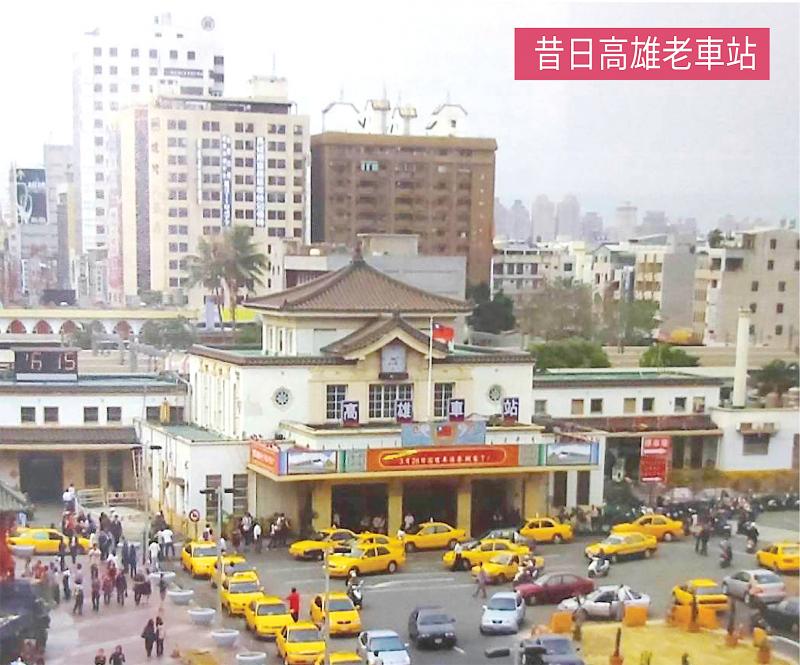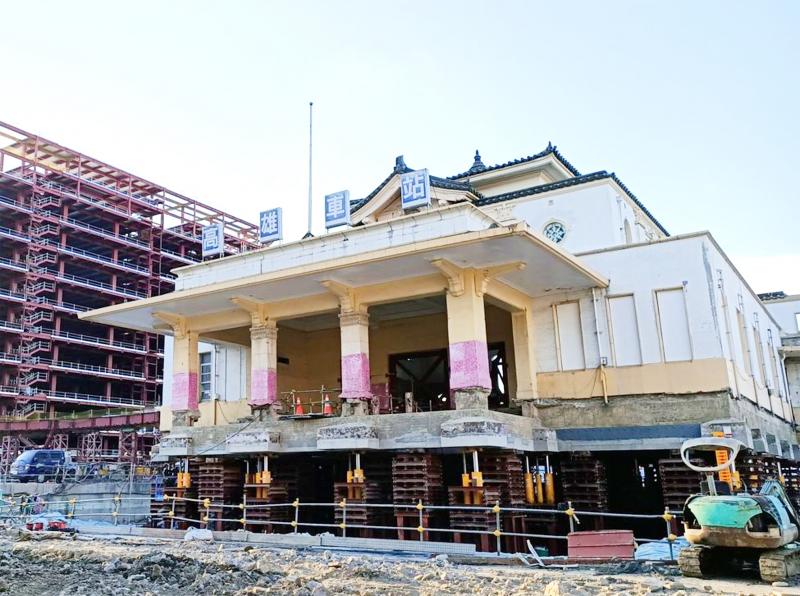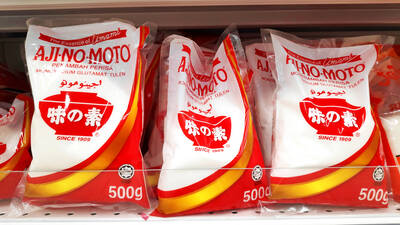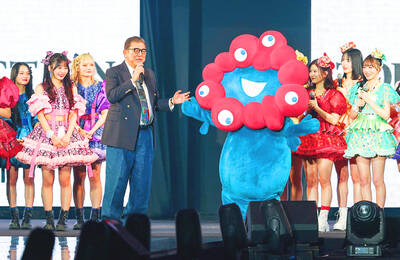The 2,500-tonne structure of the old Kaohsiung Station began its journey home on July 26. According to the plan, it will be moved 62.66m in two months. On the first day of the process, it was moved 70cm north without a hitch. It is expected to reach the central axis of the new Kaohsiung Station by Sept. 26.
The old Kaohsiung Station, built in 1941 during the Japanese colonial period as part of the great Kaohsiung urban plan, was then called the New Kaohsiung Station. The style of the station’s main structure is an example of Japanese-Western style architecture. The design of the four-cornered roof with a spire, imitating a Tang Dynasty building, makes it look like a big hat from a distance, which gave rise to its nickname the “imperial-crown-style station.” In 2003, it was designated by the Kaohsiung City Government Bureau of Cultural Affairs as a historic building.
To facilitate Kaohsiung’s underground railway project, a 17-day project to relocate the “imperial-crown-style station” started on Aug. 16, 2002, setting a record for the largest relocation of cultural relics in Taiwan. The old station was repurposed as the Kaohsiung Underground Railway iCenter, housing exhibitions that record the station’s history.

Photo courtesy of Kaohsiung City Government 照片:高雄市政府提供
Now that Kaohsiung’s new station area is nearly completed, the Railway Bureau and the Kaohsiung City Government are relocating the station building once again — back it to where it was 18 years ago.
(Translated by Lin Lee-kai, Taipei Times)
重達兩千五百噸的舊高雄車站七月二十六日開始「回家」,預計花兩個月時間移動六十二點六六公尺,第一天順利往北移動了七十公分,整個挪移作業預計九月二十六日前、要到達高雄新站中軸線定位。

Photo courtesy of Kaohsiung Deputy Mayor Charles Lin 照片:高雄市副市長林欽榮提供
建於一九四一年的舊高雄車站,日治時期稱新高雄驛,為當時配合大高雄都市計畫所新建的鐵道車站。其主體採和洋式建築,屋頂上方設計仿唐朝建築的四角攢尖頂,遠望像頂大帽子,被暱稱「帝冠式」車站,二○○三年由高市文化局指定為歷史建築。
因應鐵路地下化工程,帝冠式車站於二○○二年八月十六日展開為期十七天的挪移工程,創下全台最大文物搬遷紀錄。老車站改為「高雄願景館」,做為紀錄車站歷史、展覽之用。
如今高雄新站區即將完工,鐵道局和高雄市政府再次遷移車站建築,讓它回到十八年前的位置。
(自由時報記者王榮祥)

Monosodium glutamate (MSG) has been used in cooking for over a century to enhance flavor. It is often found in Chinese dishes and many other cuisines. Despite its common use, many people misunderstand the safety of MSG. The bad __1__ of MSG started in the late 1960s, when a letter to the New England Journal of Medicine described symptoms like a racing heart, weakness, and numbness after the writer ate Northern Chinese food. While no specific cause was __2__, a series of questionable studies in 1968 began to point the finger at MSG. In one such study, neurologist Herbert Schaumburg and

A: The World Expo 2025 is set to open in Osaka, Japan, on Sunday, with 158 countries and regions and nine international organizations participating in the event. B: Wow, what’s the theme this time? A: The theme is “Designing Future Society for Our Lives.” B: Do you want to go? How long will it last? A: It’ll run for 184 days, until Oct. 13. Maybe we can go to Osaka during summer vacation. A: 2025年世界博覽會預計週日將在日本大阪開幕,158個國家或地區及9大國際組織將參與盛會! B: 哇這次的主題是什麼? A: 主題是:「創造閃耀生命光輝的未來社會」。 B: 你想要去嗎?展出多久啊? A: 世博會共展出184天到10月13日,或許我們暑假時可以去大阪玩。 (By Eddy Chang, Taipei Times/台北時報張迪)

A: The World Expo 2025 is about to open in Osaka. Is Taiwan going to participate in the event too? B: Sure, the Taiwan External Trade Development Council (TAITRA) will launch a Taiwan pavilion named “Tech World.” A: That sounds cool, and it can showcase our national strength in technology. B: The theme is “Connecting the world to create better future lives together.” The pavilion aims to attract over one million visitors. A: I hope humans can really create better future lives through this year’s fair. A: 2025年世博會即將開幕,這次台灣也會參加嗎? B: 當然啦,外貿協會的台灣館將以「Tech World」名義參展! A: 聽起來蠻酷的,應該是想強調台灣的科技實力。 B: 策展主題則是:「連結世界,共創未來美好生活」,希望能吸引到100萬人次參訪。 A: 希望藉由這次世博會,人類真的能共創美好生活。 (By Eddy Chang, Taipei Times/台北時報張迪)

The study had several issues. Small sample sizes made it hard to draw __7__ conclusions. Additionally, taking a __8__ like pure MSG on an empty stomach is likely to make a person ill in any case. Choosing individuals who already had a history of the symptoms could have created a bias because they were likely to __9__ the reactions again. When real scientific research on the effects of MSG was eventually done, many of the myths surrounding it were proven __10__. The U.S. Food and Drug Administration and other global organizations have found MSG safe to eat. Today, MSG